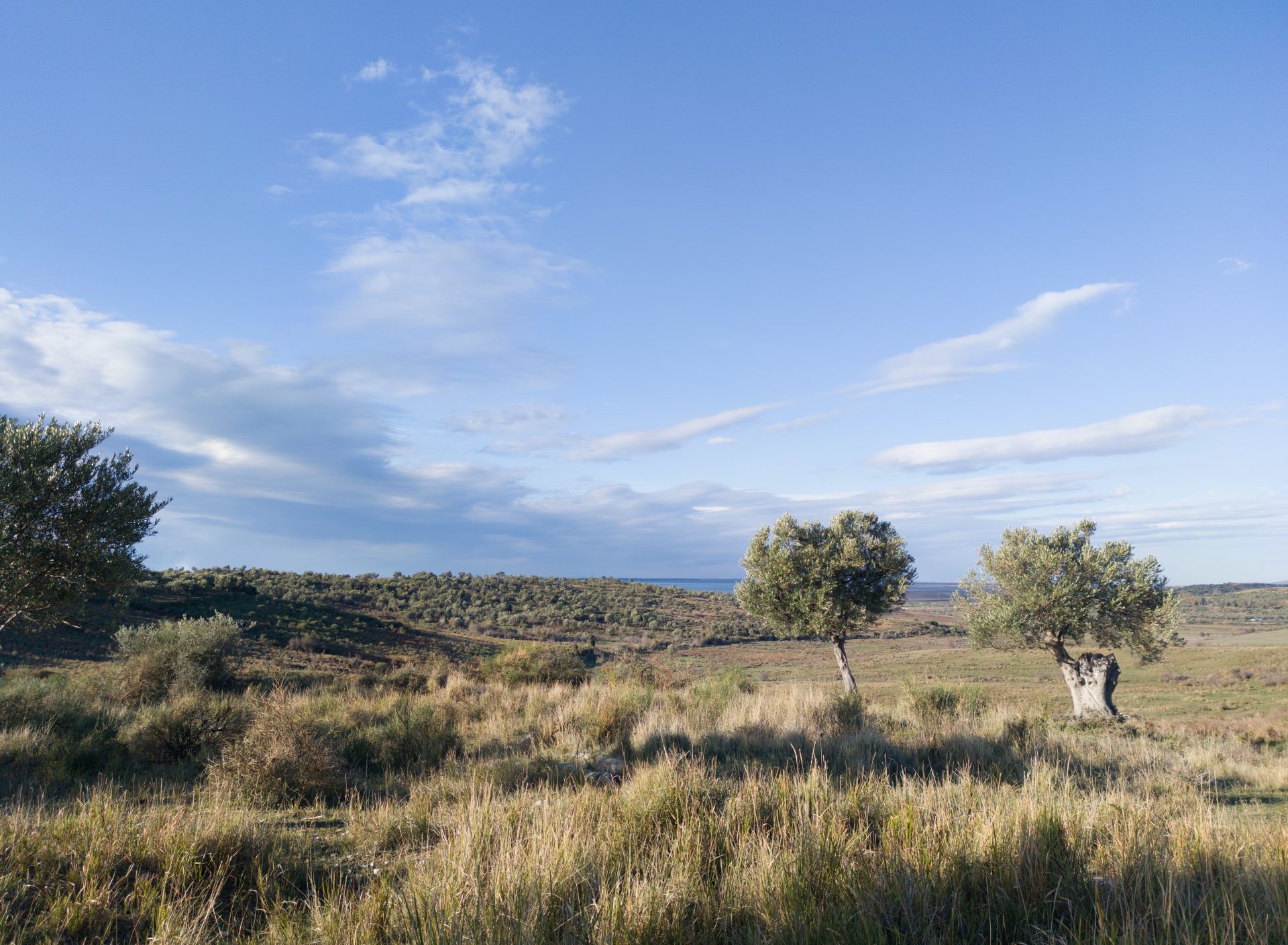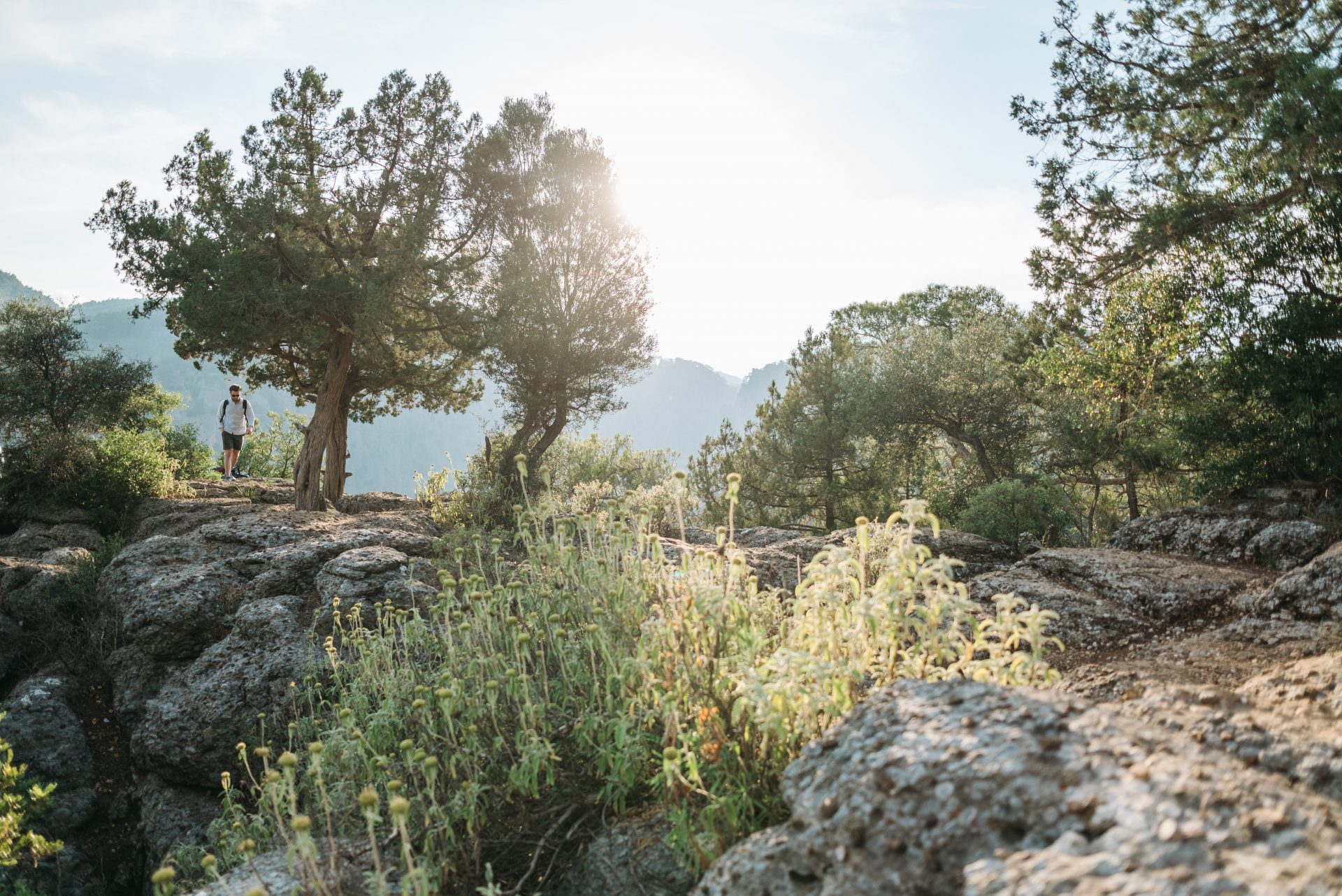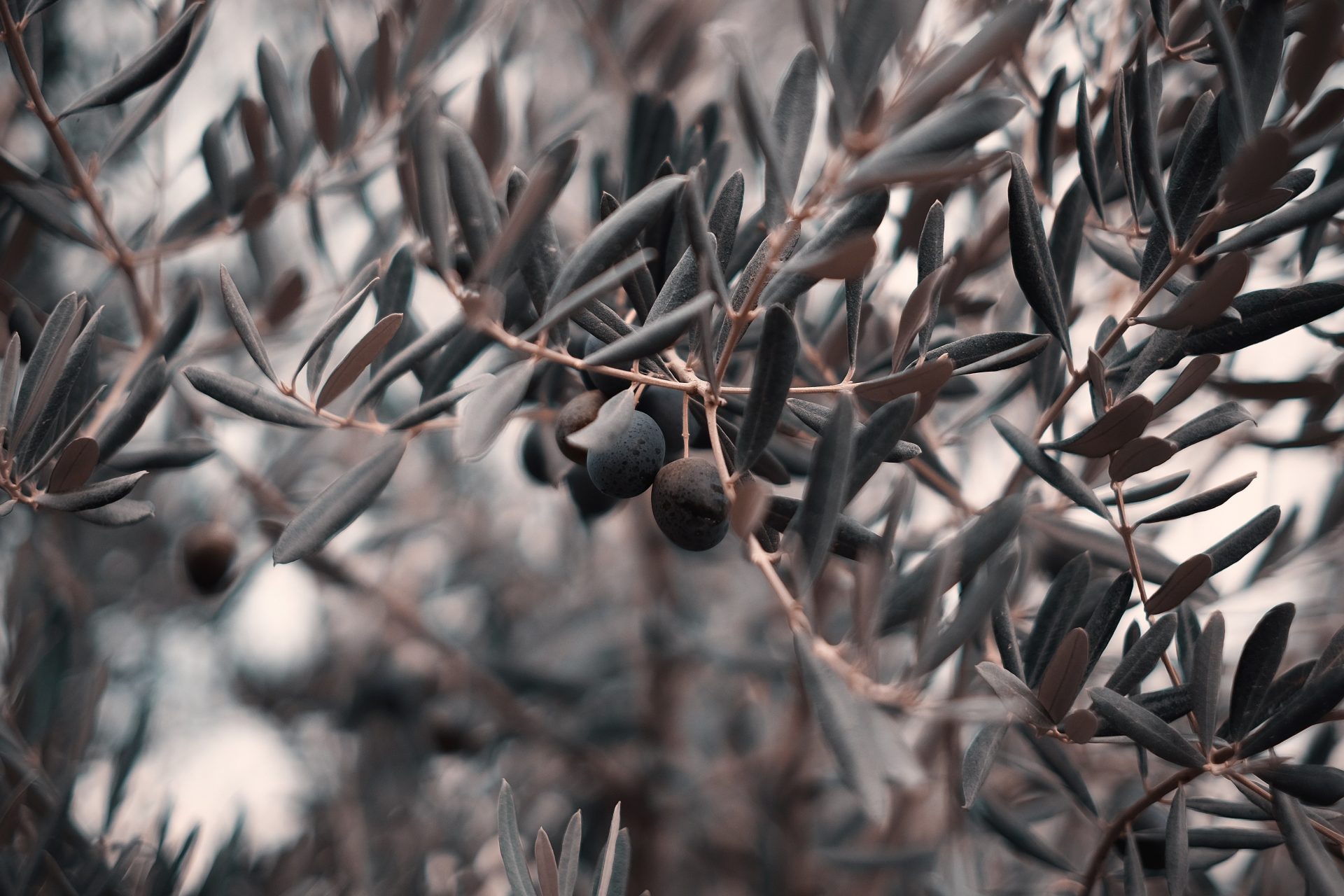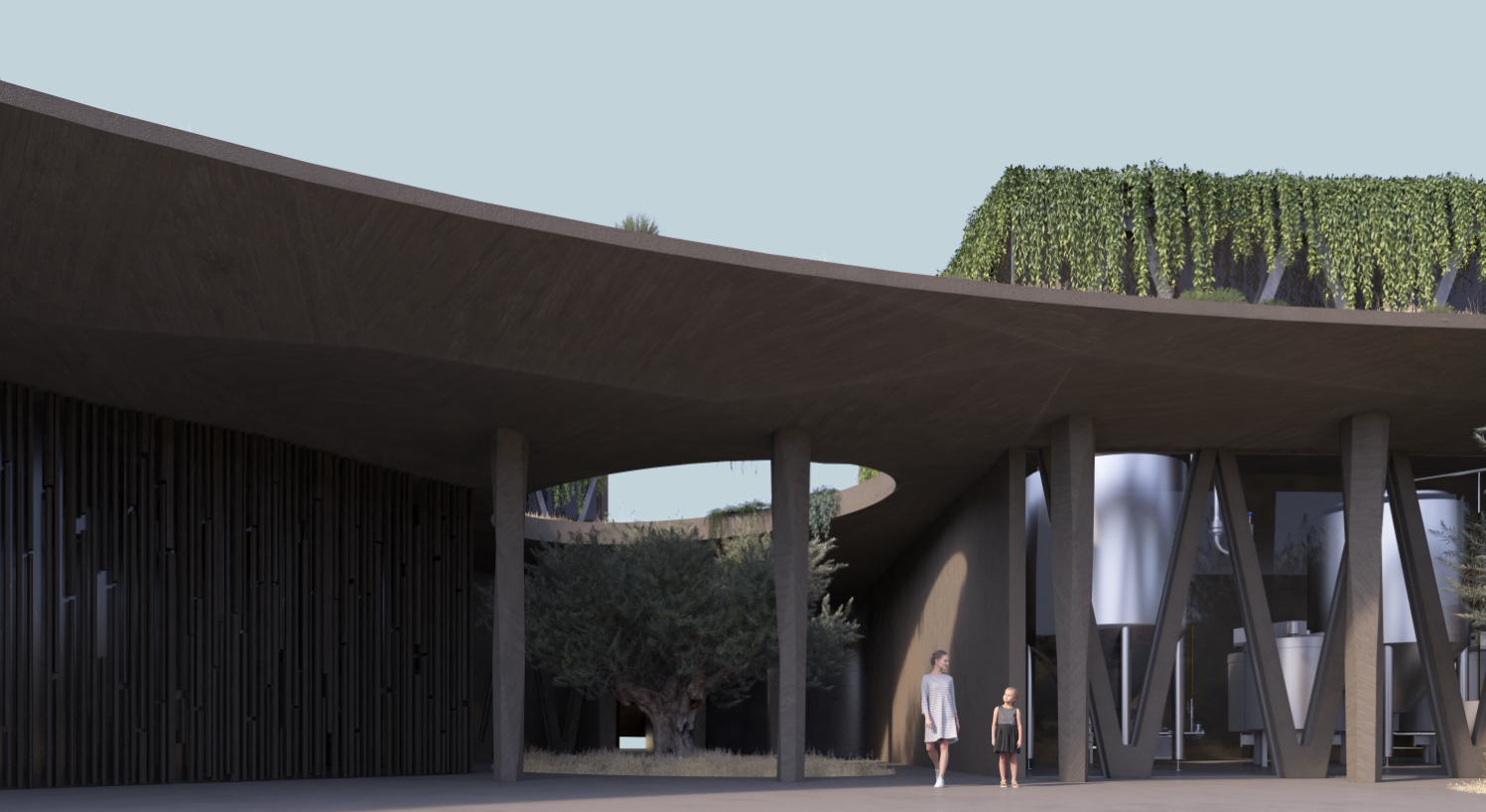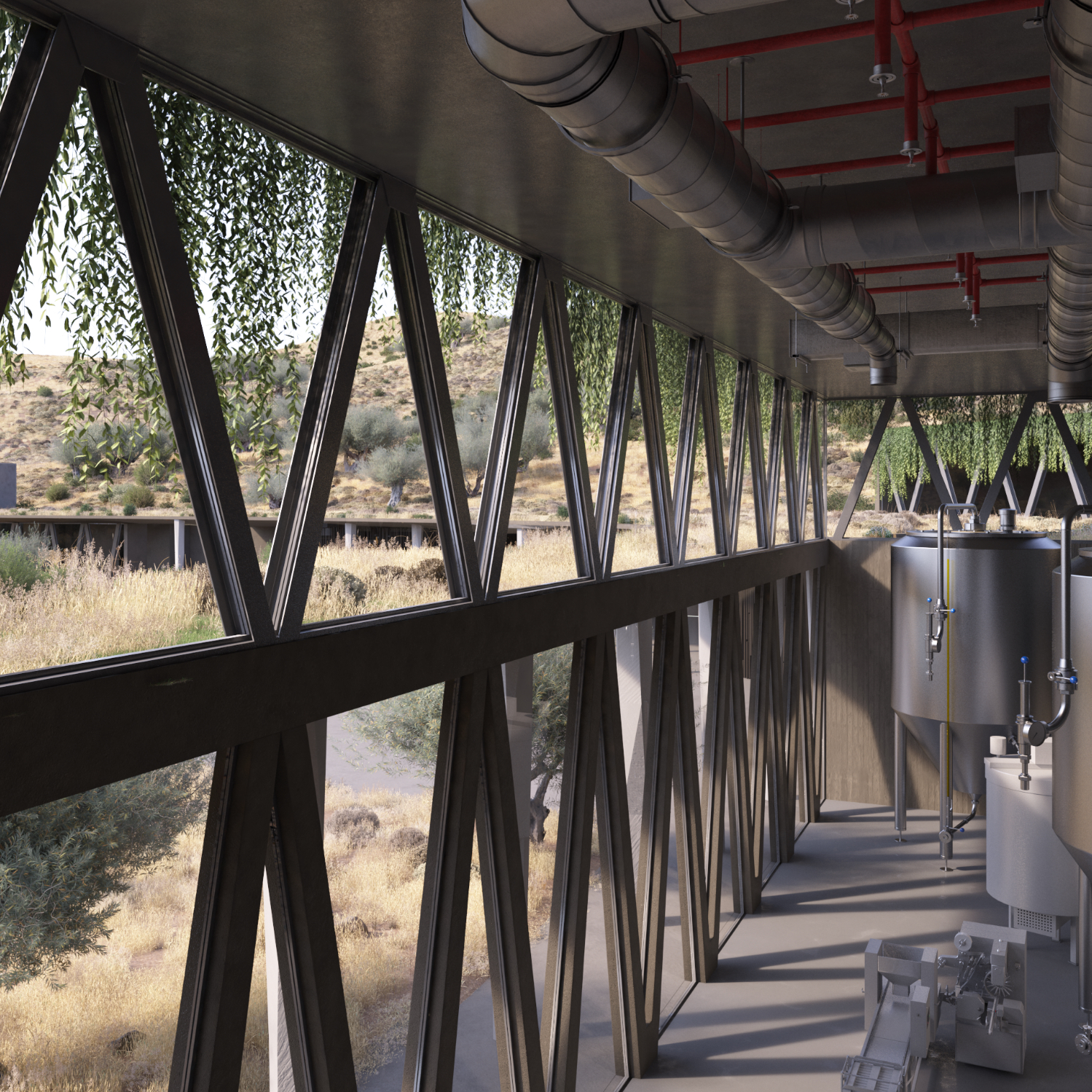Our goal is not so much to answer the specific question, but to pose the question through architecture.
An architectural idea cannot be the object of analysis. Only aspects of it can be (objects of analysis), perhaps.
The issue at stake with the architectural idea for the olive mill is the relationship between humans and nature. Specifically, in a mill, a natural product (in this case, olives) is processed. The question is whether the outcome of this processing (the olive oil) is still a natural product.
Our goal is not so much to answer the specific question, but to pose the question through architecture.
The question is expressed in two ways in the olive oil mill design:
1. How can we express the question in terms of symbolic space?
2. How can we express the question in terms of actual space?
A small number of parallels follows here that may be the best way to make the architectural concept known and easier to codify for the needs of the project’s website.
First parallel:
Is nature singular?
Ιs the human endeavor to acquire knowledge an integral part of the creation of its cognitive object – in this case, nature?
The curved, thin line of the oil mill is the way that man intervenes in nature and constitutes the point of distinction between the two aspects of nature.
First aspect: Harmonious nature. Nature where everything coexists and balances.
Second aspect: Sublime nature. Nature that seems to be the result of elements fighting each other within it.
In the project, this is expressed by the curved line of the concrete slab situated five meters above the oil mill’s production and processing facilities. Above this slab, harmonious nature (already existing in the wild land plot) dominates. Beneath this slab lies an uncanny aspect of nature.
Second parallel:
The manipulation
of “up” and “down”
The way in which the observer perceives what is above and what is below in physical space is governed by rules (in this context, we do not concern ourselves with how they came to be). Questions arise when these rules are not observed.
When the ground we walk on, when it is nature, and the surrounding nature are not the same, further questions arise (although structures have been created that are slowly reversing this).
In the proposal for the oil mill, the upper side of the concrete slab, 5 meters higher than the surrounding area, resembles the surrounding natural space and is connected to it (it is a continuation of it) at both ends. Under this slab (in the operating areas of the oil mill), the space is completely artificial.
So, the proposed design leaves questions about up and down, with the help of what nature means to a contemporary, average city dweller.
Third parallel:
Harmony and tasting
How are food and architecture similar? Both are compositions. What is composition? It is the impossibility of reducing the final outcome to an array of elements (hypotheses) of which the synthesis is comprised. This fact differentiates compositions that are based on the same hypotheses.
If, therefore, a composition is based on certain hypotheses, we can say that this composition is a set of hypotheses in which they (the hypotheses) coexist with a non-all element. The latter differentiates the specific set each time and it is the element that differentiates the composition from others based on the same assumptions.
No one goes to a restaurant to taste items that coexist in a menu. This can be seen in a recipe online. They go to taste the non-all. There can be no harmonious coexistence of the elements that compose a menu without the non-all element. This element at the same time differentiates the composition from an outcome that would be the result of the coexistence of the elements of which it is composed. Without this element there is no composition. When did the listing of menu elements cease to identify with itself, that is, when did it cease to be just a harmonious coexistence of elements, if it ever was? When food ceased to be identified with the satiation of hunger. How did food change in order to meet the needs created by its non-identification with the satiation of hunger is a question for those who are presently familiar with the kitchen, perhaps.
How can we do something
similar with architecture?
I will try to respond with images, in which the use that the natural space or the built elements appear to be trying to satisfy is not the obvious.
